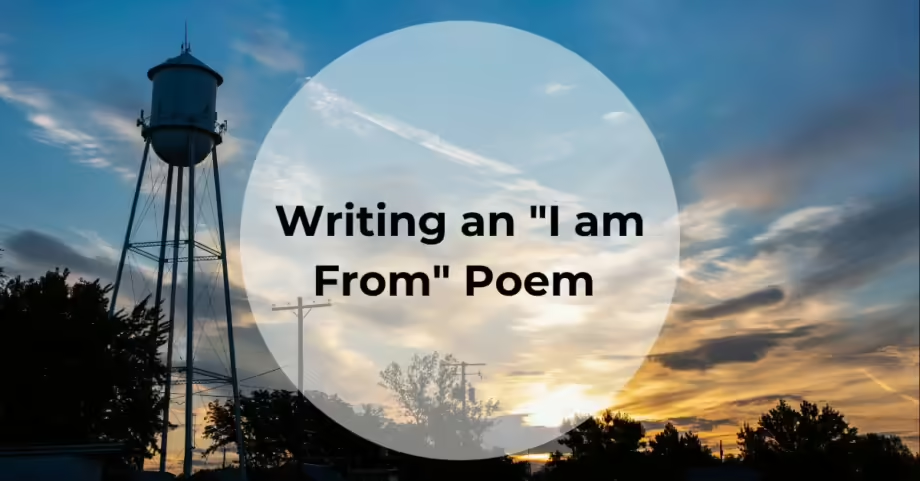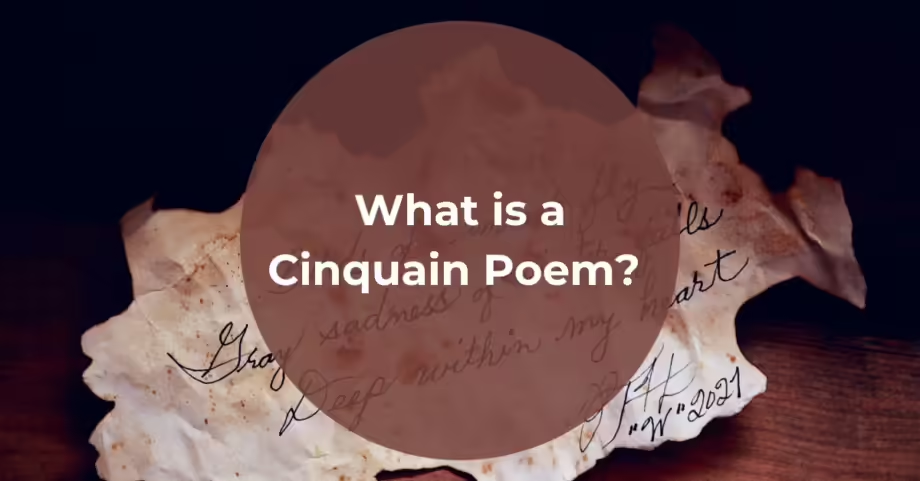With its ability to encapsulate emotions, stories, and messages in a condensed form, poetry has captivated hearts for centuries. Within the vast landscape of poetic expression, acrostic poems stand out as a unique and creative subset.
In this comprehensive guide, we will dive into the definition, examples, and the art of writing acrostic poems.
What is an Acrostic Poem?
An acrostic poem is a poem where the first letter of each line spells out a word or message, usually vertically. The word formed is often related to the theme or subject of the poem. Acrostic poems can be used to highlight names, concepts, or themes, adding a layer of depth and creativity to the writing.
Acrostic poems have a rich history, originating from ancient Greece. The term “acrostic” itself is derived from the Greek words “akros” (meaning ‘topmost’ or ‘end’) and “stichos” (meaning ‘line’).
The significance of acrostic poems is their ability to offer a hidden layer of meaning. Poets employ this form to convey messages subtly, allowing readers to unravel hidden truths as they explore the verses.
Acrostic Poem Examples
Let’s explore historical and contemporary examples to truly appreciate the art of acrostic poems. Ancient poets, including those from the Hebrew Bible, often used acrostic structures. For instance, the book of Psalms contains multiple acrostic compositions, showcasing the enduring nature of this form. Take Edgar Allan Poe’s “Elizabeth,” where each letter unfolds a tale of love and loss.
Similarly, contemporary poets experiment with themes ranging from nature to social commentary, highlighting the versatility of acrostic poetry. Enjoy the acrostic poem below by Rachel Wylie (@the_paranoid_writer on Instagram), spelling our SURVIVING.
A Piece About Survival, by Rachel Wylie
Surviving the lines, they told me I was destined to fail
Utilizing these skills, I was forced to master
Revitalizing my lungs after they left my cries on mute
Visualizing a new dimension of peace
I believe I can find the tranquility in it all.
Vibrations of neglected negative energy
Invigorate a shattered need to prosper
Never-ending gauntlets of obstacles
Give my fire the fuel to aspire.
A Boat Beneath a Sunny Sky by Lewis Carroll
A boat beneath a sunny sky,
Lingering onward dreamily
In an evening of July —
Children three that nestle near,
Eager eye and willing ear,
Pleased a simple tale to hear —
Long has paled that sunny sky:
Echoes fade and memories die:
Autumn frosts have slain July.
Still she haunts me, phantomwise,
Alice moving under skies
Never seen by waking eyes.
Children yet, the tale to hear,
Eager eye and willing ear,
Lovingly shall nestle near.
In a Wonderland they lie,
Dreaming as the days go by,
Dreaming as the summers die:
Ever drifting down the stream —
Lingering in the golden gleam —
Life, what is it but a dream?
An Acrostic, by Edgar Allen Poe
Elizabeth it is in vain you say
“Love not” — thou sayest it in so sweet a way:
In vain those words from thee or L.E.L.
Zantippe’s talents had enforced so well:
Ah! if that language from thy heart arise,
Breath it less gently forth — and veil thine eyes.
Endymion, recollect, when Luna tried
To cure his love — was cured of all beside —
His follie — pride — and passion — for he died.
How to Write an Acrostic Poem
Want to write your own acrostic poem? Follow these tips to unlock your creativity:
1. Choose a Strong Theme or Word
- Select a Central Word or Phrase: Start by choosing a word or phrase that represents the theme of your poem. This will serve as the foundation for your acrostic. For example, if you choose “NATURE,” each line of your poem will begin with the letters N, A, T, U, R, and E.
- Align the Word with Your Purpose: Ensure the word relates to what you want to express. For instance, if your poem is about friendship, consider using words like “FRIEND” or “LOYAL.”
2. Brainstorm Words and Phrases
- List Related Words: Create a list of words and phrases that connect with your chosen theme or word. For example, if you chose “OCEAN,” you might list words like “waves,” “depth,” “calm,” and “endless.”
- Think Creatively for Each Letter: Try to have multiple options for each letter, so you can craft lines that flow naturally. Don’t restrict yourself to obvious words; use synonyms and metaphors that evoke the desired emotion.
3. Pay Attention to the Flow and Structure
- Focus on Natural Language: Although each line begins with a letter from the chosen word, make sure the language feels cohesive and not forced. Aim for a balance between creativity and readability.
- Keep Line Length Consistent: Try to maintain a consistent length and rhythm for each line. It’s common for acrostic poems to use short phrases or sentences, but the length should match the poem’s tone and content.
4. Use Imagery and Figurative Language
- Incorporate Sensory Details: Describe what you want the reader to see, hear, or feel using vivid imagery. This will make your poem more engaging and powerful.
- Utilize Metaphors and Similes: Employ figurative language to give depth to your poem. For example, if writing an acrostic with the word “DREAM,” a line might read: “Daring steps into a realm unknown.”
5. Revise and Refine Each Line
- Edit for Impact and Clarity: After drafting the poem, revise each line to make sure it fully conveys your intended meaning and emotion. Remove unnecessary words and refine your language to ensure each letter-started line contributes to the poem’s overall message.
- Read Aloud for Flow and Rhythm: Reading aloud helps you catch awkward phrasing and improve the poem’s overall sound. Adjust word choices and line breaks to enhance readability and auditory appeal.
By following these steps, you can create a well-structured and meaningful acrostic poem that resonates with your readers!
Here’s an Acrostic Poem We’ve Written:
Chosen word: GATHER
The poem will be six lines long, with each line beginning with a letter, spelling out GATHER if you move vertically down the poems left-most side.
The word GATHER brings up themes of community, eating in a group, family, home, which we will integrate into the poem below.
Going to a place where we find peace
All of us together, loving the fire light on the wall.
There is always a spot to sleep here.
Habits will form and pass on to our children.
Ever welcoming new faces and friends.
Reaching for love in safe spaces.
Acrostic Poem FAQs
Do acrostic poems have to rhyme?
Acrostic poems do not need to rhyme. Other than choosing a word, and therefore letter, to start each line of your poem with, acrostic poetry is a very accessible and easy form of poetry to learn and write.
What is the main idea of an acrostic poem?
The main idea of an acrostic poem is to capture the word or you’ve select as your initial letter for the start of each line. Using the individual poetic lines to get this theme across is the fun (and challenging) part.
Conclusion
As we conclude our exploration of acrostic poems, we invite you to embrace this unique form of poetic expression. Whether you are an aspiring poet or a poetry enthusiast, acrostic poems offer a canvas to weave words into hidden narratives. The allure of acrostic poetry persists through the ages, and now, armed with knowledge, you can embark on your own poetic odyssey, unraveling the magic within each line.
Want to share an acrostic poem with us? Submit your poetry to our magazine.
I am From Poems & How to Write One
Poets often reflect on the places they came from. An origin poem, of sorts. Made…
Concrete Poetry: Where Writing & Art Merge
Writers always look for ways to push boundaries, combining forms and experimenting with genres. Concrete…
What is a Cinquain Poem? A Guide to the Five-Line Wonder
Cinquain poems have a simple form but a unique structure. Known for their concise beauty,…
What is Ballad Poetry?
The allure of ballad poetry lies in in its ability to tell a story and in its…
Villanelle Poems: Definition, Examples, and How to Write Them
When it comes to poetic forms, the villanelle is a unique and captivating style. With…
What is a List Poem?
Looking for a simple poetic form that can pack a lot of punch. Meet list…







